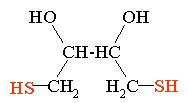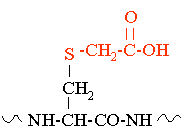|
An IonSource Tutorial |
||
| Monograph 0004 | ||
| S-Carboxymethylation of Cysteine: Why Should I Reduce Before S-Carboxymethylation? | ||
| . | ||
| . | ||
| . | ||
| . | ||
| .. | ||
|
Why Reduce? Reduction should be performed prior to all S-carboxymethylation reactions, unless there is a good analytical reason not to do it. Here are a few reasons why you should reduce first: 1) Synthetic peptides that contain cysteine: Synthetic peptides that contain cysteine that have not been purposefully oxidized will invariably polymerize upon reconstitution. Without reduction, dimers, trimers and tetramers may form. Most types of analysis of a synthetic cysteine containing peptide will be compromised if the peptide is not reduced first. When attempting to fully S-carboxymethylate a peptide or protein, reduce it first even if the cysteine residues are supposedly free. 2) At higher concentrations: At higher concentrations proteins that have single or multiple free cysteines will polymerize. In addition polymerization may occur during sample work-up, thus forming unexpected products. 3) Natural and recombinant proteins and peptides: Natural proteins and peptides that are reported to have free cysteines will often have cysteine or glutathione associated with that supposedly free cysteine. In this case a reduction will simplify the analysis, but of course you may lose information with this reduction. In this case it is wise to do good science and run the appropriate controls for the analysis (+ and - the reduction, + and - the S-carboxymethylation). Useful Note: If the purpose is to obtain a reduced LC/MS mass spectrum of a peptide or protein an alternative is to reduce and shoot the mixture onto a reversed phase column to obtain the desired reduced disulfide result. The peptide will not polymerize during this procedure. Due to the short residence time on the column the high pH of the injection mixture will not significantly harm the silica of the reverse phase column. |
|
|
 Iodoacetic Acid |
||
 Cysteine |
||
|
|
||
|
.
|
||
|
TOC Introduction Reaction Method Method Notes Why Reduce? |
||
| - | ||
| - | ||
|
home
| disclaimer |
||

